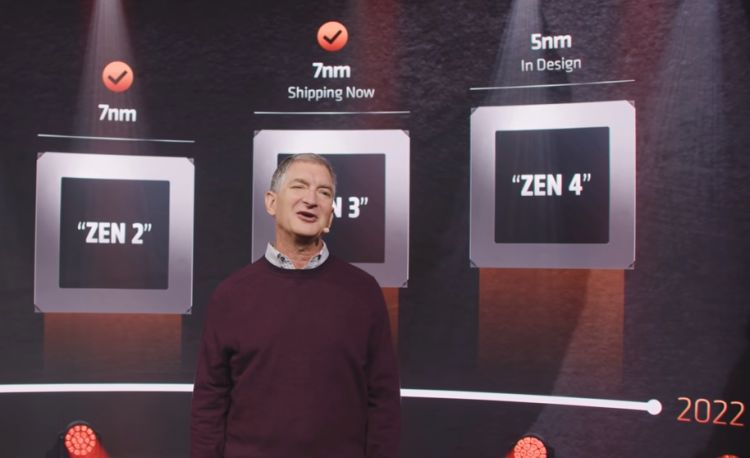AMD has so far been reluctant to talk about processors with the Zen 4 architecture. At the October presentation of the Ryzen 5000, it was noted that they are now in development, and will be produced using 5nm technology closer to 2022. As it turns out, the performance improvements in Zen 4 processors will come from a combination of factors, just like Zen 3.
Image source: AMD, YouTube
–
–
–
About this in his interview to the resource TheStreet said the executive vice president of AMD for computing and graphics products Rick Bergman (Rick Bergman). He noted that the company needed to improve the Zen 3 architecture in several ways at once to achieve a 19% increase in specific performance. In the case of Zen 4, the list of improvements will be as long as he said. Branch prediction, the structure of the cache memory and changing the length of the execution pipeline – all this will coexist with the increase in the energy efficiency of processors, provided by the transition to 5nm manufacturing technology.
Bergman made it clear that even within the 7nm technology, AMD processors will undergo interim improvements – if only because TSMC is improving its lithographic technologies. Switching to EUV lithography is not a problem for AMD, but at the same time it does not provide any visible advantages in terms of processor characteristics. In fact, as Bergman explained, EUV lithography is more beneficial to TSMC.
Speaking about the shortage of TSMC’s production capacity in the 7nm direction, an AMD representative admitted that demand has not yet been fully satisfied, but considerable efforts are being made to this, and 2021 in this sense may change something. Ryzen Threadripper processors will continue to evolve, but Bergman did not specify when they will move to the Zen 3 architecture. AI acceleration features will be implemented by AMD in their own processors, and eventually they will even appear in consumer solutions.
As in the case of RDNA 2, the company intends to pay close attention to improving the specific performance per watt of the RDNA 3 graphics solutions. At the same time, AMD graphics solutions using 5nm technology will move in a time comparable to that of central processors, which actually points to 2022.
Since the use of EUV and advanced manufacturing processes in the production of absolutely all components at a particular time may have limited economic viability, AMD will continue to develop layout technologies. The three-dimensional layout will first try on the most expensive and productive products of the brand, but over time it will reach the desktop segment.
–
If you notice an error, select it with the mouse and press CTRL + ENTER.


